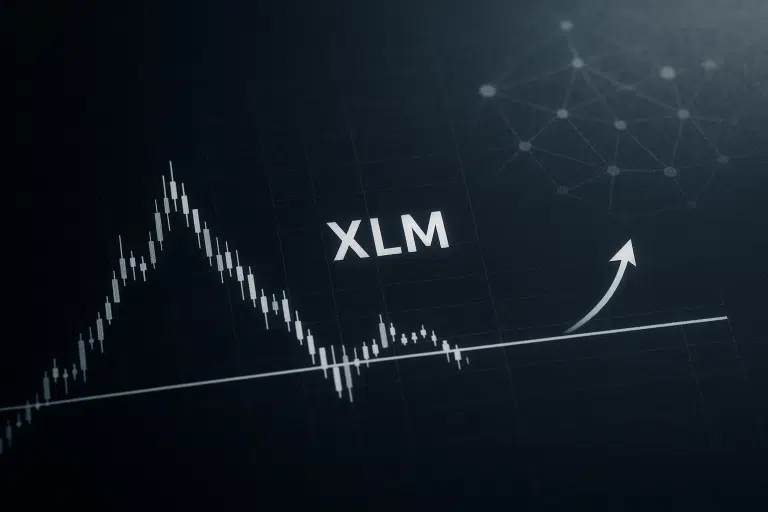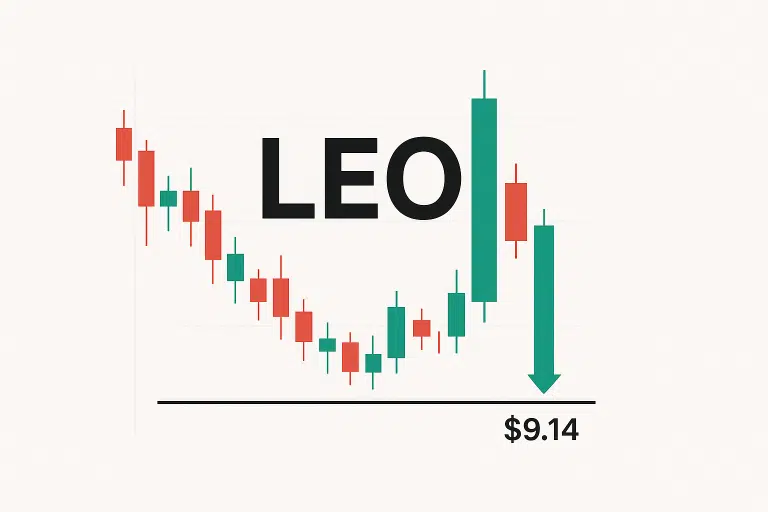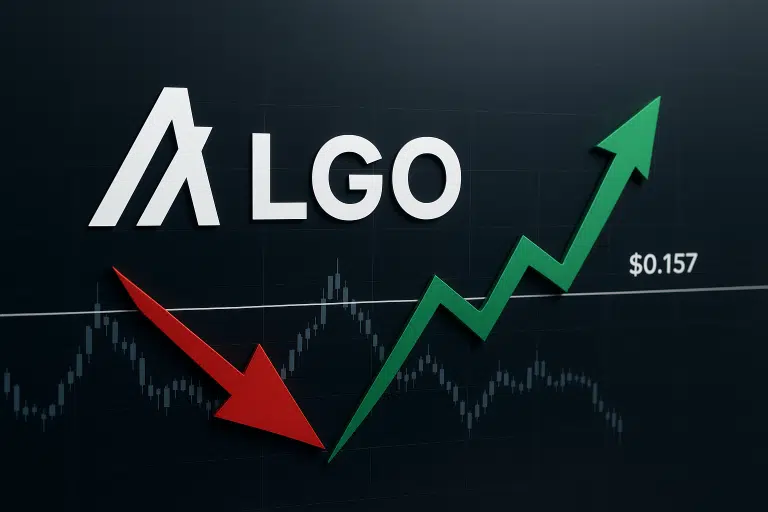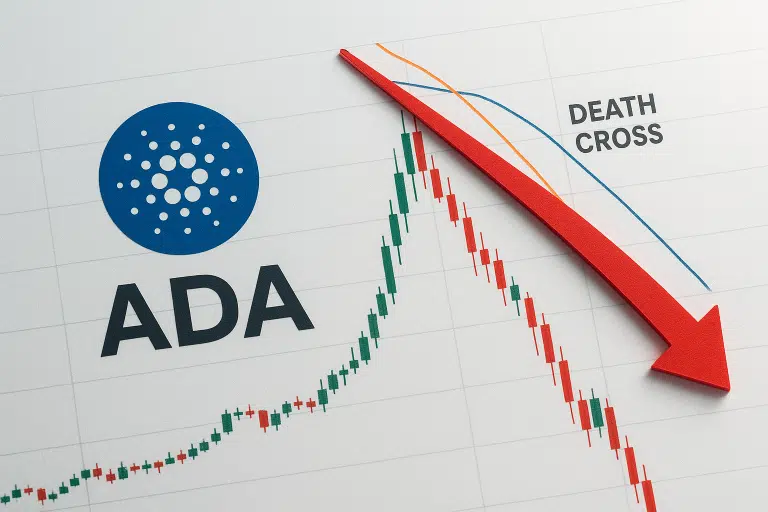AAVE Tests 50-Day EMA Support as Apple Store Launch Sparks Recovery Hopes
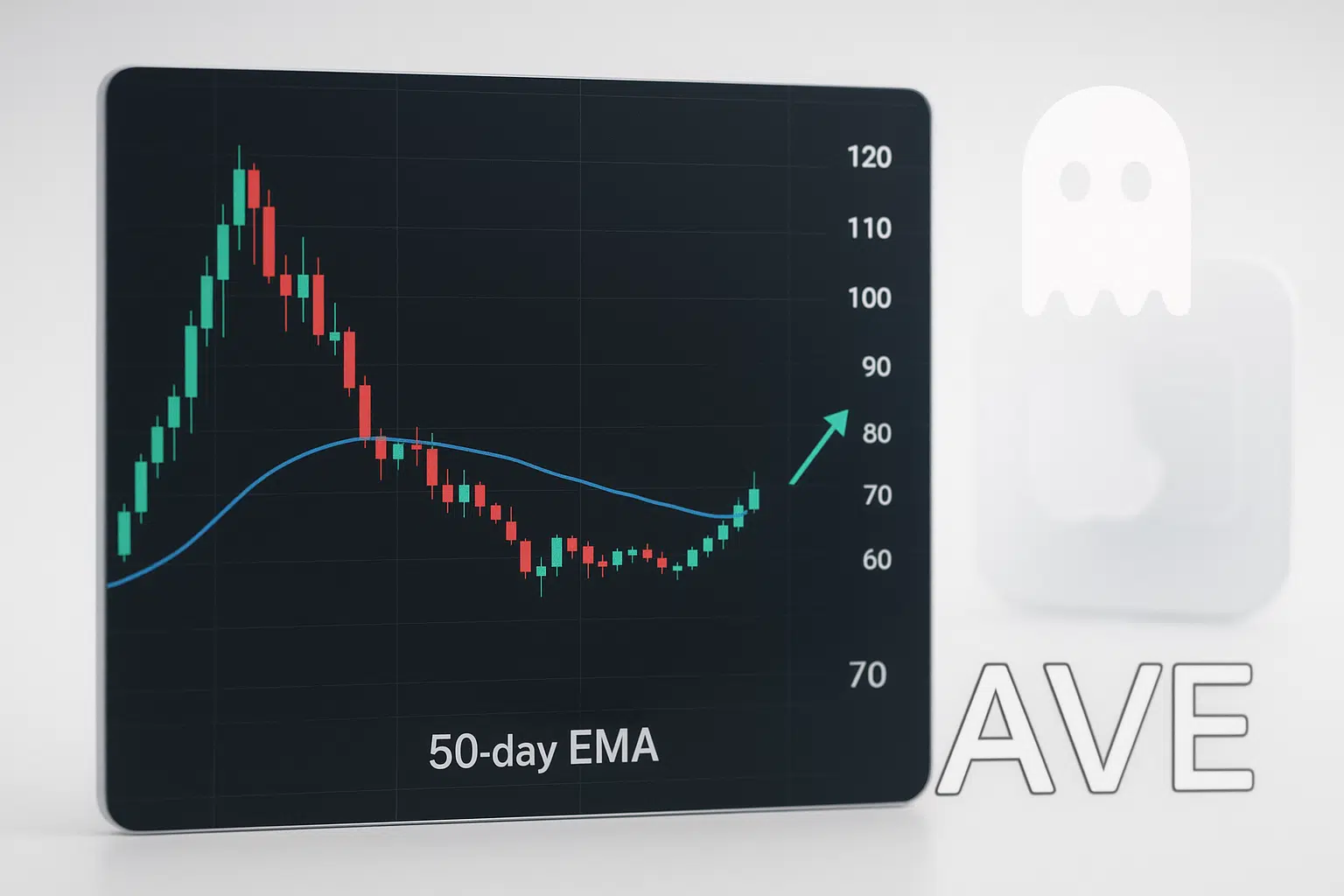
Market Pulse
- AAVE bounces from $155 monthly low, currently trading at $174.16
- Apple Store savings app launch brings mainstream DeFi to millions of iPhone users
- 50-day EMA at $186 emerges as immediate resistance after supporting price for months

AAVE staged a recovery attempt this week, climbing 3% to $174.16 after touching monthly lows near $155. The rebound coincides with Aave Labs launching its high-yield savings app on the Apple Store, potentially opening DeFi yields to millions of mainstream users for the first time. With the token down 32.9% over six months but showing signs of stabilization, the main question for traders is: can this fundamental catalyst reverse the technical damage, or will sellers defend the broken support levels overhead?
| Metric | Value |
|---|---|
| Asset | AAVE (AAVE) |
| Current Price | $174.16 |
| Weekly Performance | -17.64% |
| Monthly Performance | -15.77% |
| RSI (Relative Strength Index) | 36.7 |
| ADX (Average Directional Index) | 37.6 |
| MACD (MACD Level) | -14.78 |
| CCI (Commodity Channel Index, 20-period) | -134.74 |
RSI at 36.7 Signals Oversold Bounce – But Momentum Remains Weak
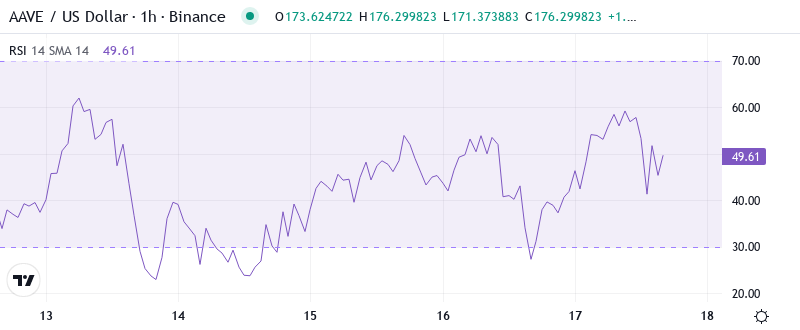
RSI sits at 36.7 on the daily timeframe, marking oversold territory that typically triggers relief rallies. Similar RSI readings in August and October preceded 20-30% bounces, though each failed to establish sustainable uptrends. The oscillator’s inability to reclaim the 50 neutral zone for over two months reveals persistent selling pressure that even positive news struggles to overcome.
What’s revealing is how RSI behaved during this week’s Apple Store announcement rally – climbing from 28.9 to just 36.7 despite the bullish catalyst. This muted momentum response suggests traders remain skeptical about AAVE’s near-term prospects, with many using bounces to reduce positions rather than accumulate. So for swing traders, this oversold reading offers a tactical long opportunity, but the weak momentum profile warns against expecting more than a relief rally to the $190-200 resistance zone.
ADX at 37.6 Confirms Established Downtrend Still in Control
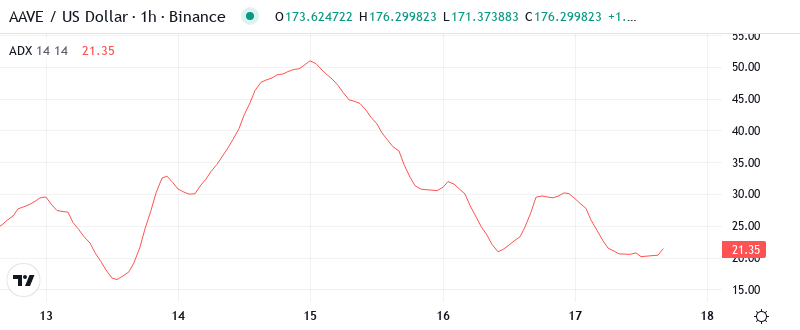
Looking at trend strength, the ADX reading of 37.6 indicates a mature downtrend with significant directional conviction. Values above 25 signal trending conditions, while readings approaching 40 often mark exhaustion points where trends pause or reverse. At current levels, the indicator confirms sellers maintain control despite this week’s bounce attempt.
Basically, the elevated ADX tells us that AAVE’s downtrend from November highs carries real momentum – not just sideways chop that resolves quickly. The Apple Store launch and yield app developments provide fundamental support, but technically the trend structure favors fading rallies into resistance rather than buying dips. Therefore, day traders should adapt strategies to this trending environment, focusing on shorting failed breakouts above the 20-day EMA at $201 rather than catching falling knives.
50-Day EMA at $186 Transforms From Support to Key Resistance
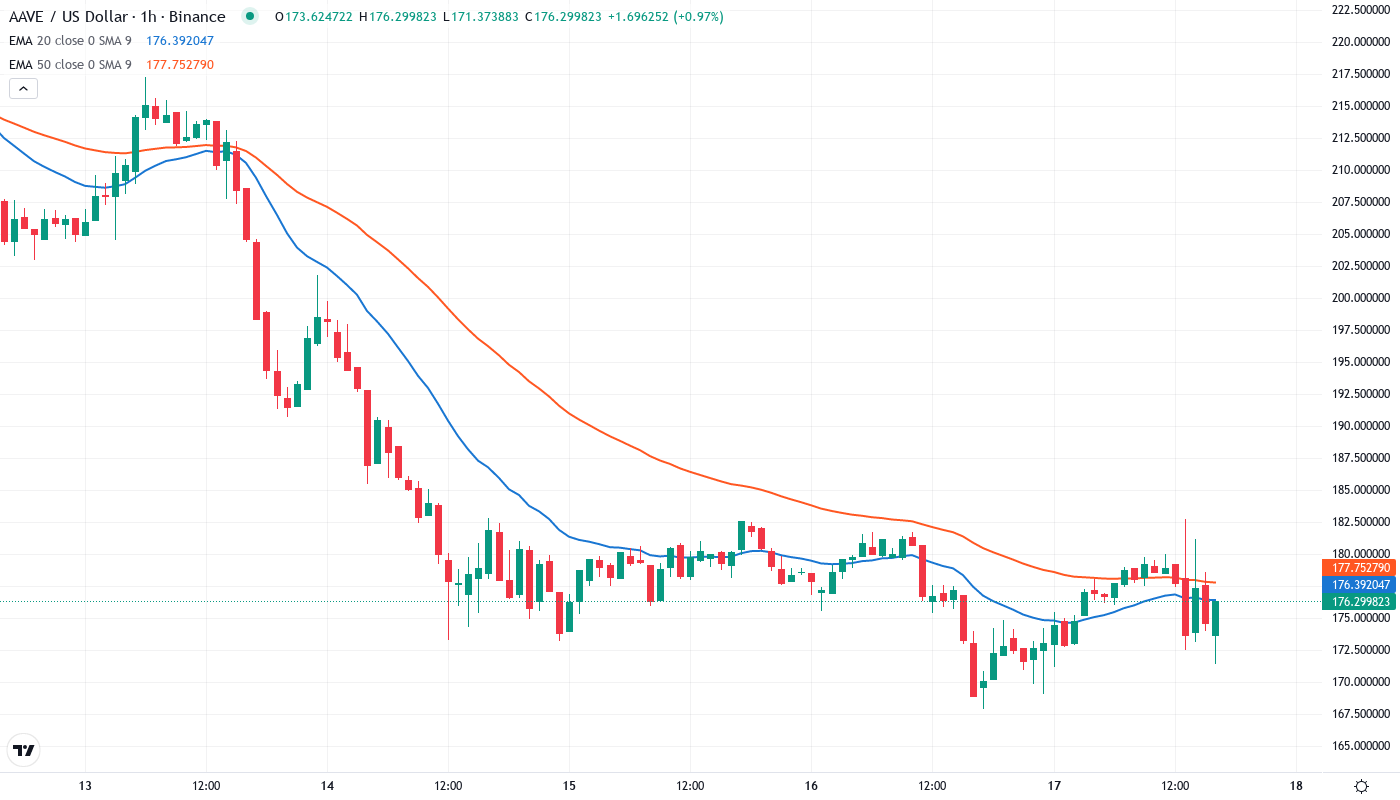
Price action reveals a clear rejection at moving average resistance. AAVE currently trades at $174.16, trapped below the 10-day ($189.8), 20-day ($201.5), and crucially the 50-day EMA at $186.4. The 50-day level supported price throughout October and November before breaking down in early December – that former floor now acts as a ceiling.
During this week’s Apple-fueled rally, bulls managed to push from $155 to $178 but stalled precisely at the confluence of the 10-day EMA and prior support. This behavior confirms the market structure shift from bullish to bearish, where former support zones transform into resistance. The 100-day EMA sits much higher at $226.7, while the 200-day at $155.5 provided this week’s bounce floor. For AAVE to signal genuine trend reversal rather than just oversold relief, reclaiming and holding above $186 becomes essential.
Resistance Clusters Between $186 and $210 Cap Near-Term Upside
Above current levels, sellers have fortified multiple resistance zones. The immediate barrier sits at $186.4 where the 50-day EMA converges with December’s breakdown level. Next comes the psychological $200 level, reinforced by the 20-day EMA at $201.5 and the monthly pivot at $204. The most formidable resistance clusters between $210-226, where the 100-day EMA meets November’s support-turned-resistance.
Bulls defend support more successfully, with $155-160 proving reliable after six tests since December. The 200-day EMA at $155.5 anchored this week’s reversal, while deeper support waits at the monthly S1 pivot around $142. The $330 million USDT whale transfer into Aave this week suggests institutional players view these levels as accumulation zones, though sustained buying hasn’t yet emerged.
Market structure remains bearish as long as price stays below $186. Each rally attempt into moving average resistance attracts fresh selling, while support levels gradually weaken from repeated tests. The pattern resembles a descending triangle, typically resolved through breakdown unless fundamental catalysts like the Apple Store launch can shift sentiment decisively.
Bulls Need Daily Close Above $186 to Validate Recovery Attempt
Should AAVE secure a daily close above the 50-day EMA at $186, the technical picture shifts from bearish to neutral. Bulls would then target $201-210 resistance, where clustered moving averages create the next major decision point. The Apple ecosystem integration provides ongoing fundamental support for such a scenario.
The bearish case triggers if $155 support fails on volume. This would trap recent dip buyers and likely cascade toward $142 monthly S1, potentially extending to $120 if panic selling emerges. Watch for rejection at $180-186 on declining volume as an early warning signal.
Given current momentum indicators and the established downtrend, the most probable path sees AAVE consolidating between $160-186 while the market digests Apple Store adoption metrics. Without clear user growth data showing mainstream adoption, technical traders will likely continue fading rallies at resistance rather than buying breakouts.

